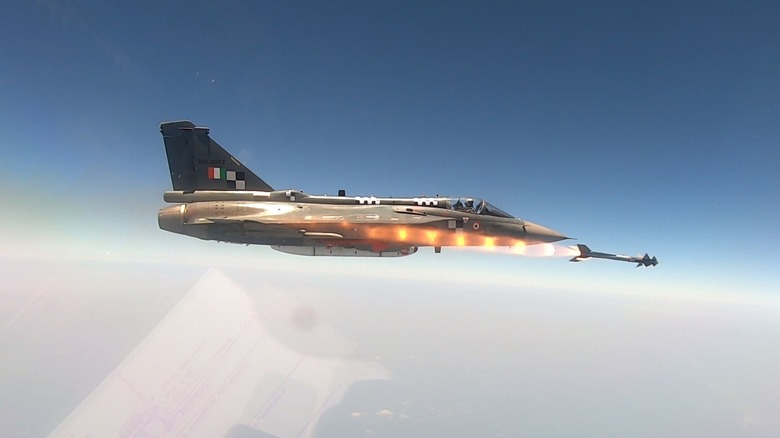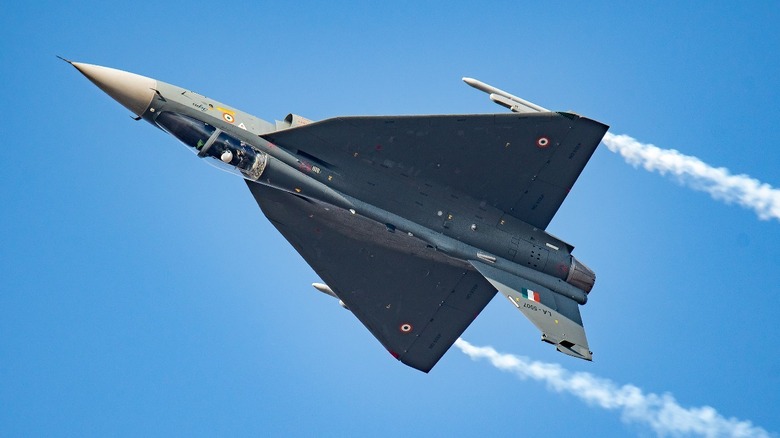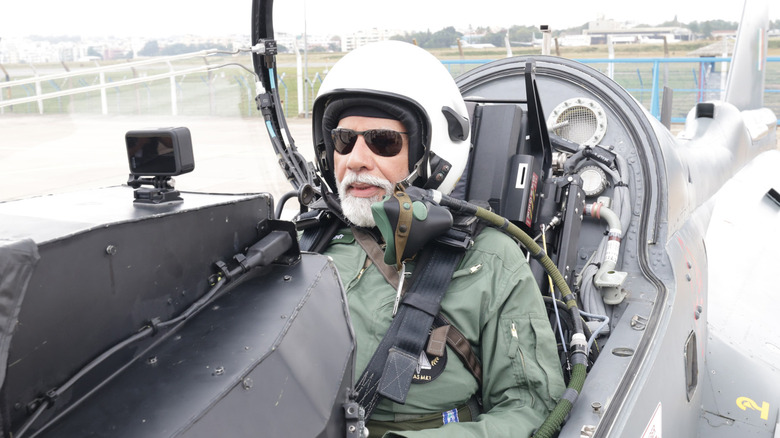
Months after India's May 2025 bombing campaign against Pakistan, its air force has hit a crisis point, with concerns over its dwindling squadron numbers mounting amid a flurry of combat losses, crashes, and model phaseouts. Following the conflict, in which five IAF aircraft were shot down, including three Dassault Rafale fighter jets; many have worried that India's Air Force is quickly falling behind its geopolitical rivals. Poor weapons procurement systems, inconsistent political support, and a troubled
domestic production pipeline have left one of the world's largest air forces dependent on an aging fleet of foreign-made aircraft quickly dwindling in numbers and capabilities.
Exemplifying these struggles has been the failure of the Tejas Light Combat Aircraft to meet its sky-high expectations. Manufactured by the state-owned Hindustan Aeronautics Limited, the Tejas began service in the 1980s as a means for India to cement its military preparedness through a domestic alternative to expensive foreign fighters. This was a strategic necessity considering the Indian military's dependence on foreign procurement, particularly from Russia. However, instead of securing India's military autonomy, pervasive design failures and production snafus have limited the state-owned company's supply of the much-anticipated fighter, forcing the IAF to rely on older, phased out, foreign-manufactured jets.
This has put the Indian military in a precarious position compared to its two geopolitical rivals, China and Pakistan. The increasing advancement of the Chinese air force makes these lags in India's aerial development particularly concerning. And while new versions of the jet are expected to begin delivery to the Indian Air Force by 2026, giving the IAF a chance at reshaping the success of its much-maligned program, continued production delays may kill this optimism.
Read more: 10 Largest Air Forces In The World, Ranked By Military Aircraft Numbers
A Troubled Air Force History

Born out of a collaboration between HAL and the Ministry of Defense's Aeronautical Development Agency, the single-engine, fourth-generation light combat multirole fighter was conceived as the Indian successor to the much-maligned Russian-made MiG-21 fighters. Although Indian officials have touted the Tejas as a game-changer, design and procurement failures have significantly hampered the program since its founding.
First conceived with the locally-built Kaveri engine, a failure to meet thrust requirements led the IAF to replace it with General Electric's F404. This decision, however, further delayed production: American sanctions in 1998 prevented HAL from procuring the jet's powerplant. According to Indian officials, the domino effect of this delay pushed the plane's delivery back by two decades. Supply issues would plague the state-owned manufacturer until the fighter received its final operational clearance in 2019, nearly 25 years after the program's initial 1994 target date.
As it stands, India operates merely 38 Tejas Mark-1 fighter jets across two squadrons. Although domestically assembled, it's debated whether the jet accomplishes the program's aims of a domestically crafted fighter jet, as over 33% of its components are imported. In 2021, the IAF ordered 83 units of a new variant of Tejas — Mark-1a — which will reportedly upgrade the fighter's electronics, fly-by-wire hardware, and radar system. However, in four years, none have been delivered, while an additional order of 97 aircraft is currently under consideration. Meanwhile, HAL continues to develop the more powerful Tejas Mark-2, hoping to begin producing 120 units by 2034. With a reported 80% of the engine manufactured domestically, India hopes that the Mark-2 will improve the autonomy of its jet production.
A Murky Future For The IAF

An influx of upgraded Tejas is essential for India to keep pace with its geopolitical rivals. While the IAF has a sanctioned capacity of 42 fighter jet squadrons, only 31 are operational. Two of these squadrons are made up of 60-year-old MiG-21s, a Soviet fighter jet expected to retire in September 2025. Too many of the 27 remaining non-Tejas squadrons are composed of aging foreign-made fighters; including Jaguars, Mirage-2000s, and MiG-29s, all of which are expected to be phased out in the coming years. Exacerbating the issue is the cancellation of the multi-role combat aircraft deal, which reduced India's purchase of 126 new aircraft to 36.
While the Indian Air Force and Navy have added a collective 62 French-made Rafale fighter jets since 2016, experts predict that India will likely fall behind Pakistan's aerial fleet within a decade. China operates 66 squadrons, more than double that of India. Air Chief Marshal A.P. Sing stated that the IAF must produce roughly 40 jets a year to meet its capability needs; a number that appears impossible at current production rates.
The IAF needs to drastically scale its production of the Tejas to meet its lofty goals. Unfortunately, in February 2025, following further delays in GE's delivery of its engine, Sing stated that he had "no confidence" in HAL delivering the jet. HAL has turned to foreign and private sector partners to hasten production, including outsourcing the rear fuselage. As of now, the IAF only expects 6-16 to be delivered in 2026, well below its production goals. The Mark-2, for its part, is aiming to begin flight testing in 2026. However, concerns over the jet's engine continue to loom large.
Want the latest in tech and auto trends? Subscribe to our free newsletter for the latest headlines, expert guides, and how-to tips, one email at a time.
Read the original article on SlashGear.












